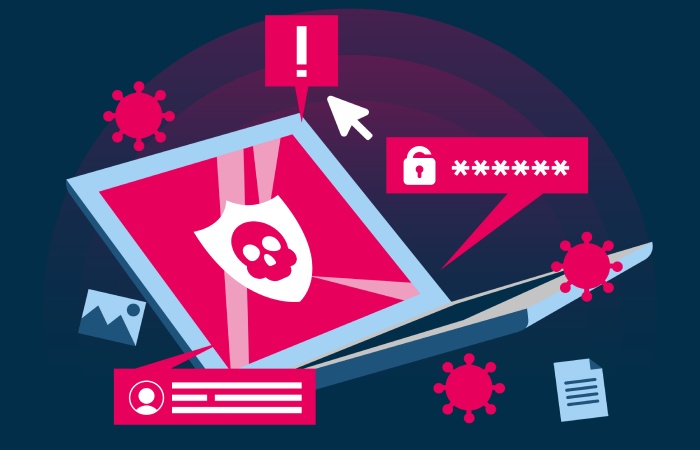Security in social media is a hot topic for businesses of all sizes. Whether you’re concerned about data breaches, account hacking, or simply preserving your brand’s reputation, it’s important to take social media security practices seriously. Here are seven tips to keep your business safe online.
What Makes a Strong Social Media Account?
For entrepreneurs, having a strong social media presence is essential. But what exactly makes for a strong social media account? Let’s take a closer look at the building blocks:
- One key ingredient is a large number of followers. This shows that your brand has widespread appeal and your message is seen by a wide audience. You might need an ultimate guide about how to get more Instagram followers (free and paid ways) to ensure your audience is both large and engaged.
- A well-designed account is likewise visually appealing and easy to navigate, which makes it more likely that users will stick around and interact with the content. Additionally, a stylish social design helps to create a professional image for a business, which can attract more customers and followers.
- Another important element is high-quality content. Your posts should be interesting, informative, and shareable to capture potential customers’ attention. Using a photo enhancer can significantly improve the visual appeal of your images, making your content stand out even more in crowded social feeds. Pairing these visuals with effective branding graphic design can create a more cohesive and memorable representation of your brand. Use different analytics tools as they can help you to track your audience’s reactions to posts as well as solve some narrow tasks such as how to see how many tweets a hashtag has.
- Finally, don’t underestimate the importance of security. Your business’s activity on social media is inevitably associated with certain risks and you should know how to manage them to protect the brand’s reputation.
Social Media Security Threats Every Business Should Know
So what kind of threats should a business be prepared for? Here are a few common examples of risks companies’ accounts are facing today:
- Phishing attacks. Phishing scams are a type of online fraud that occurs when criminals pose as a trusted brand or individual and try to trick users into sharing personal information or clicking on malicious links.
- Malware attachments. Malware infects computers and devices and, once installed, collects sensitive information or tracks online activity. Hackers can spread malware by sharing infected links or files.
- Impersonation. Criminals can create fake accounts and pretend to be someone else to gain access to personal information or commit fraud. Impersonation can also be used to damage the reputation of an individual or business. For brands investing in growth strategies such as purchasing Instagram followers to build social proof, maintaining strong account security becomes even more important to protect that investment and preserve credibility.
- Cyberbullying. This threat involves the use of electronic communications to bully or harass someone. It can include sending threats, posting inflammatory comments, and spreading rumors or private information online.
- Identity theft. This occurs when someone uses your personal information without permission, usually for financial gain. Criminals access this information by hacking into accounts or stealing login credentials from users.
7 Social Media Security Practices To Protect Your Business
Luckily, there are several simple steps that businesses can take to protect themselves from the most common threats. By adopting these seven practices, companies can keep their data safe and secure.
Tip #1: Enable two-factor authentication
Two-factor authentication adds an extra layer of security by requiring users to enter a code from their mobile phone in addition to their password when logging into their accounts. This makes it much more difficult for hackers to gain access to an account.
Tip #2: Use a strong password
A strong password is at least eight characters long and includes a mix of uppercase and lowercase letters, numbers, and symbols. Businesses should use strong passwords for their accounts and change them regularly.
Tip #3: Review privacy settings
By reviewing your privacy settings regularly, you can ensure that only the people who should have access to your company’s information can see it.
Tip #4: Keep software up to date
Out-of-date software is one of the most common ways that hackers gain access to systems. Businesses should see to it that all software is kept up to date with the latest security patches.
Tip #5: Don’t open attachments from unknown senders
Attachments are one of the most common ways that viruses are spread. Businesses should warn employees not to open anything from unknown senders, even if they appear to be legitimate.
Tip #6: Avoid clicking on links
Phishing attacks often involve fake messages that contain malicious links. Employees should be warned not to click on any links unless they are sure they are legitimate.
Tip #7: Report suspicious activity
It is also a good idea to use effective brand monitoring tools to ensure the stats are regular and nothing unusual is going on. If an employee notices there is anything suspicious about the business’s account, they should report it to their IT department or system administrator immediately.
Final Thoughts
Wrapping it up, although not always obvious, social media security is something businesses should take care of to protect their information. In a nutshell, they need to be aware of the potential risks and have a plan in place to prevent attacks.


